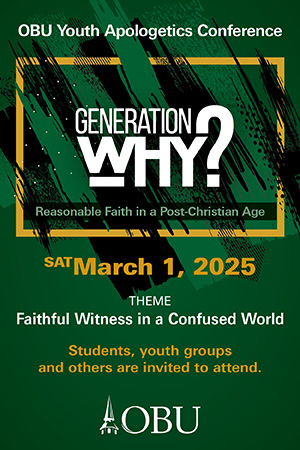“Trauma is the mission field of the twenty-first century.” Those words from Diane Langberg resonated in my heart as I thought of my friends, both believers and non-believers, around the world who have suffered trauma. From the pastor whose daughter died in a motorcycle accident, to the wife who suffers daily abuse, to the children who live in constant fear of death in their war-torn countries, trauma is everywhere, affecting how we live and interact with others.
Understanding Trauma
Trauma is highly stressful events that cause a variety of negative consequences, including mental and emotional difficulties, sometimes manifesting in physical symptoms. For non-believers, these difficulties cause a barrier to hearing and understanding the good news. For believers, these difficulties cause a barrier to spiritual growth.
“True trauma healing cannot occur without an acceptance of Jesus as Savior.”
People who have experienced trauma may not be able to think clearly, believe, or comprehend what they hear—including the gospel—because of fear, guilt, anger, inward focus, or depression. Typical church planting strategies tend to not address these barriers. As a result, church planting efforts can be thwarted, and church planters may question why their traditional methods of teaching and leading aren’t reproducing healthy believers and churches.
If it’s true that trauma creates barriers to spiritual growth and understanding, we are facing a mammoth task as we seek to address the difficult consequences of trauma and plant healthy reproducing churches.
What Is New Hope?
Many IMB teams serve people who have experienced trauma, but few of these people are believers, few learn well through reading, and few churches exist among them. Many good, biblical trauma healing strategies exist.
But to reach these groups effectively, many IMB teams needed a uniquely oral strategy to reach the majority of our population with more effective communication. We needed something that clearly presents God’s redemptive plan because true trauma healing cannot occur without an acceptance of Jesus as Savior. Our strategy must also be multiplicative because God’s plan is always about multiplying his good news through the very people who have experienced it. As participants experience healing and freedom through the gospel, they are able to take that hope to others.
Almost three years ago, a small group of like-minded field personnel began talking about how to meet this need by integrating trauma counseling, orality strategies, and components of church planting. Two Bible storying practitioners/trainers, two trauma counselors, and three church planters from different parts of the world prayerfully crafted an initial program, called New Hope: Multiplying Healing to Wounded Hearts.
New Hope is built on three foundations that are necessary for the journey of healing: safe community, faith, and purpose.
Trauma Counseling: Creating a Listening Community
Hurting people need a safe, listening community. Although the first stage of trauma recovery necessarily involves supplying the basic needs of safety, food, shelter, and basic care, as time passes people move into the second stage of trauma recovery and are ready to share and process their stories.
Each New Hope session creates a healing community environment, giving participants an opportunity to safely share their stories. We create the necessary space to grieve, lament, and express emotion. We encourage participants to practice listening skills as others share their stories. Sessions include trust-building activities, setting ground rules, and implementing safeguards for people who aren’t yet ready to share their stories.
Orality Strategies: Internalizing the Truths of Scripture
No true trauma healing can happen apart from Christ. New Hope clearly presents the full story of God’s redemptive plan in history. God designed us to be in a right relationship with him and with each other, but these relationships were broken when we sinned. Pain, suffering, and death entered the world.
God’s plan restores us to a right relationship with him through Jesus’s death, resurrection, and continuing presence through his Holy Spirit. When Jesus returns, all suffering and death will be destroyed. This redemptive hope in our eventual total release from suffering is the core of New Hope.
People need a way to internalize these truths of Scripture. Bible storying has been used effectively around the world and provides a way of interacting with and experiencing Scripture in deeper ways. Bible stories provide a solid response to people’s trauma stories by allowing the Holy Spirit to speak through his Word.
“Bible stories provide a solid response to people’s trauma stories by allowing the Holy Spirit to speak through his Word.”
New Hope participants interact with the Bible stories through hearing, retelling, drama, discussion, and focused healing activities. The Bible stories become part of their own story, weaving together a beautiful pattern that slowly begins to bring meaning and purpose in their own tragedies.
Church Planting: Instilling Purpose
People need purpose. Helping others by sharing good news provides a way for people to look beyond their hurt and find purpose in it.
One church planter in Sub-Saharan Africa said, “New Hope is both effective for trauma healing and for discipleship. The most significant impact has been seeing our participants growing in personal evangelism and confidence in the Word of God. They are able to take their eyes off of their personal issues and see how God can use them. As a direct result, we are seeing churches strengthened.”
Although New Hope can be used in any of the missionary tasks—as an entry strategy, or even as a component of discipleship or leadership development— church planting strategies provide the reproduction framework in which New Hope is set. Healthy reproducing church planting strategies encourage all participants—mature believers, new believers, and not-yet-believers—to immediately pass on what they have learned.
New Hope ensures the reproducibility of each session by dividing the session into three parts. Participants look back by sharing what God did when they shared the Bible story that week, and they practice listening to each other. They look up by internalizing God’s Word. They look forward by practicing the story and praying for those to whom they will tell the story. Group participants are encouraged to start their own groups that continue to start their own groups with the continued mentorship of the original leader and in the same simple format.
Among non-believers where there is no church, new fellowships are formed that are intentionally designed to lead to healthy churches. Among believers, personal issues diminish as they seek to invest in kingdom growth. Churched participants contribute to the local church in a healthier way and as a result, churches are strengthened.
Comfort in Our Troubles
Paul wrote to the Corinthian church that God comforts us in all our troubles so that we can comfort others. When others are troubled, we will be able to give them the same comfort God has given us. (2 Cor. 1:4) The beautiful image of comfort in Paul’s letter to the Corinthians embodies New Hope’s ethos—God’s comfort in us is used to comfort others. The baton is passed; the healing is multiplied.
As the foundational story for New Hope, Joseph embodies the healing journey. God walks with us through our suffering and brings us to place where we can say, like Joseph, “You intended to harm me, but God intended it all for good. He brought me to this position so I could save the lives of many people” (Gen. 50:20 NLT).





